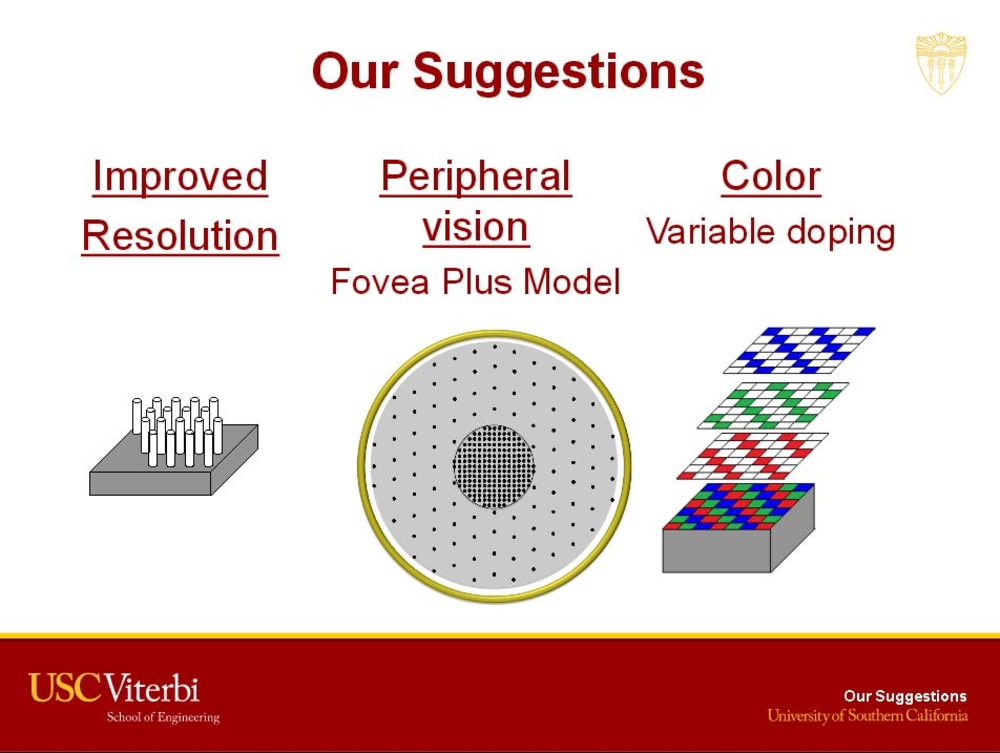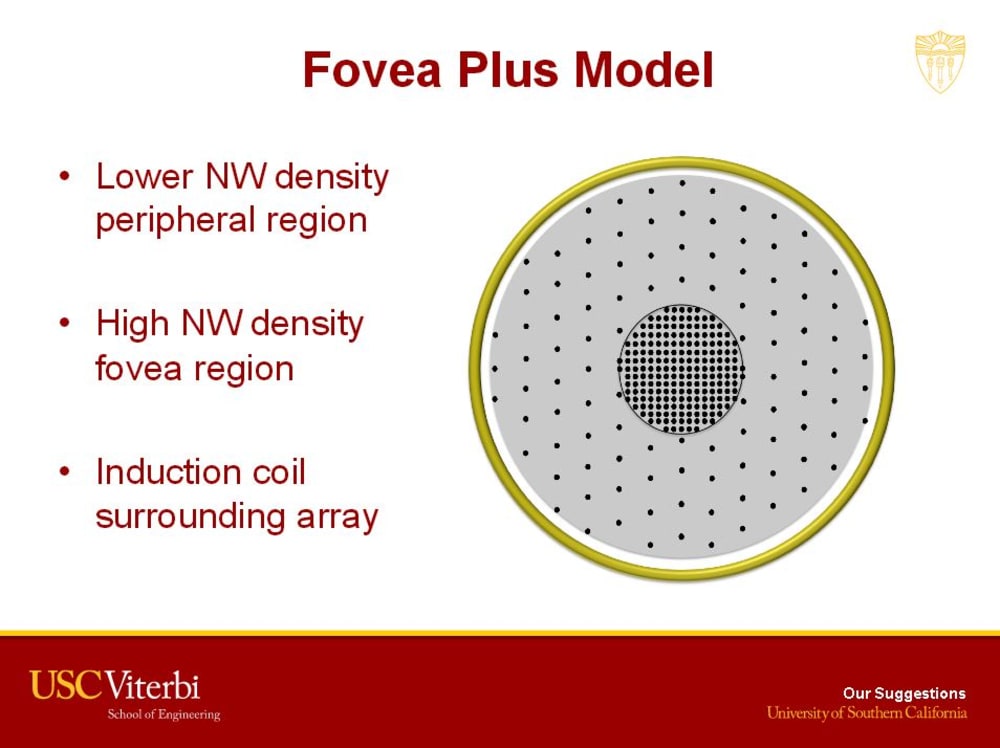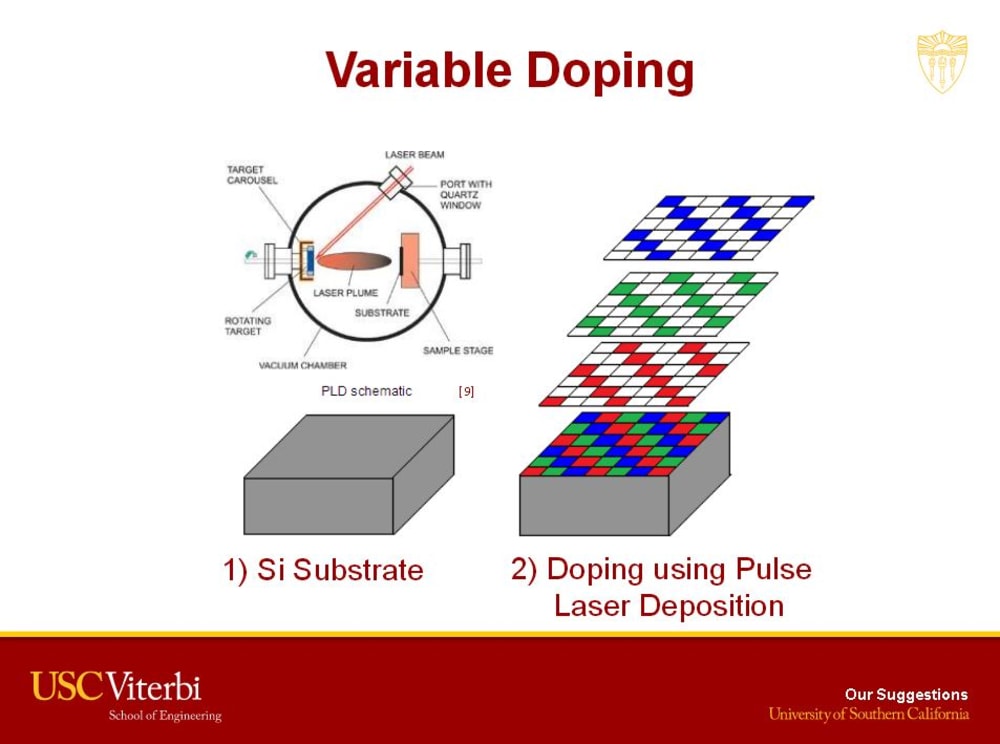The loss of vision through retinitis pigmentosa and macular degeneration is a slow torture many have been forced to endure. Retinal prosthesis are beginning to change all that though electrical stimulation. In a healthy human retina, there is a 1.5mm across section on the retina that is composed of an extremely dense patch of cones, known as the fovea. The concentration of cones decreases rapidly as you move away from the retina, with rods filling in the gaps. The high density of cones allows for the high color and detail perception associated with the fovea. There are three types of cones, each tuned to a specific wavelength spectrum, which stimulate the underlying ganglion cells to allow the perception of color. Rods are only sensitive to the intensity of the incoming light. The area outside of the fovea is mainly responsible for movement detection by processing done by the retinal neurons. In this work, I propose the use of silicon nanowires to act as photoreceptors for the stimulation of the retina. The new design will include limited peripheral vision and color detection without the need for an external or internal camera and therefore, significantly decreasing the circuitry required.
Like this entry?
-
About the Entrant
- Name:Peter Choo
- Type of entry:individual
- Patent status:none








